Votre panier est actuellement vide !
I started growing linen about 8 years ago, as a complete amateur. I read everything I could about the process of growing and harvesting the plants, but it took a lot of trial and error, before I began to start producing anything that was at all satisfactory. There are many steps to the process of producing one’s own linen fabric from scratch, but I now feel that I am starting to understand them, and can try to share what I have learnt.
An interesting point to note is that in American English the plants and their fibre are called flax. When this flax fibre is spun, and woven into cloth, the cloth is called linen. However, I tend to call everything linen, as it’s simpler that way.
Planting the linen
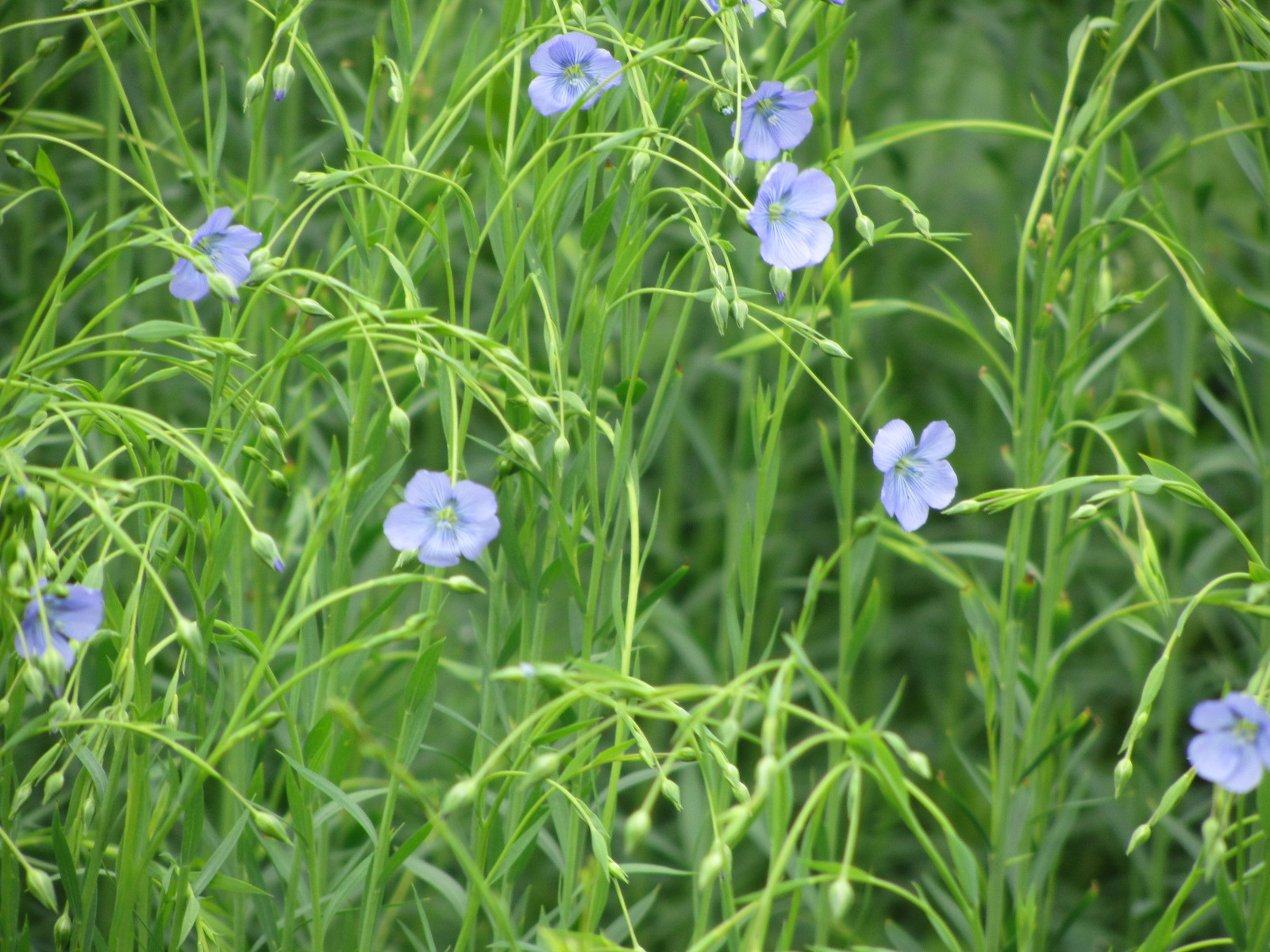
Linen seeds are very fertile, and grow very well, in the moist cool climates of Northern and Middle Europe. The better you prepare the ground, before sowing, the better your crop.
I use a hoe to make furrows, or drills, about a foot apart, then I sow the seed by hand in the furrows, and cover them over with soil, using my feet. Plant the seeds quite thick – but don’t go mad. This is something I still find quite tricky.
The seeds will probably germinate quite quickly, and soon appear above the surface. Hoe inbetween the rows as soon as you can, to get rid of the weeds. The better you prepared the ground, the less weeds there will be.
Over the next few weeks,keep hoeing inbetween the rows. The linen plants grow close together, so it’s hard to weed the rows themselves, but if you’re careful, you might be able to manage it. When the plants get very tall, hoeing becomes very difficult, so you can enjoy the flowers, and wait for the seed heads to appear.
When to Harvest the Linen
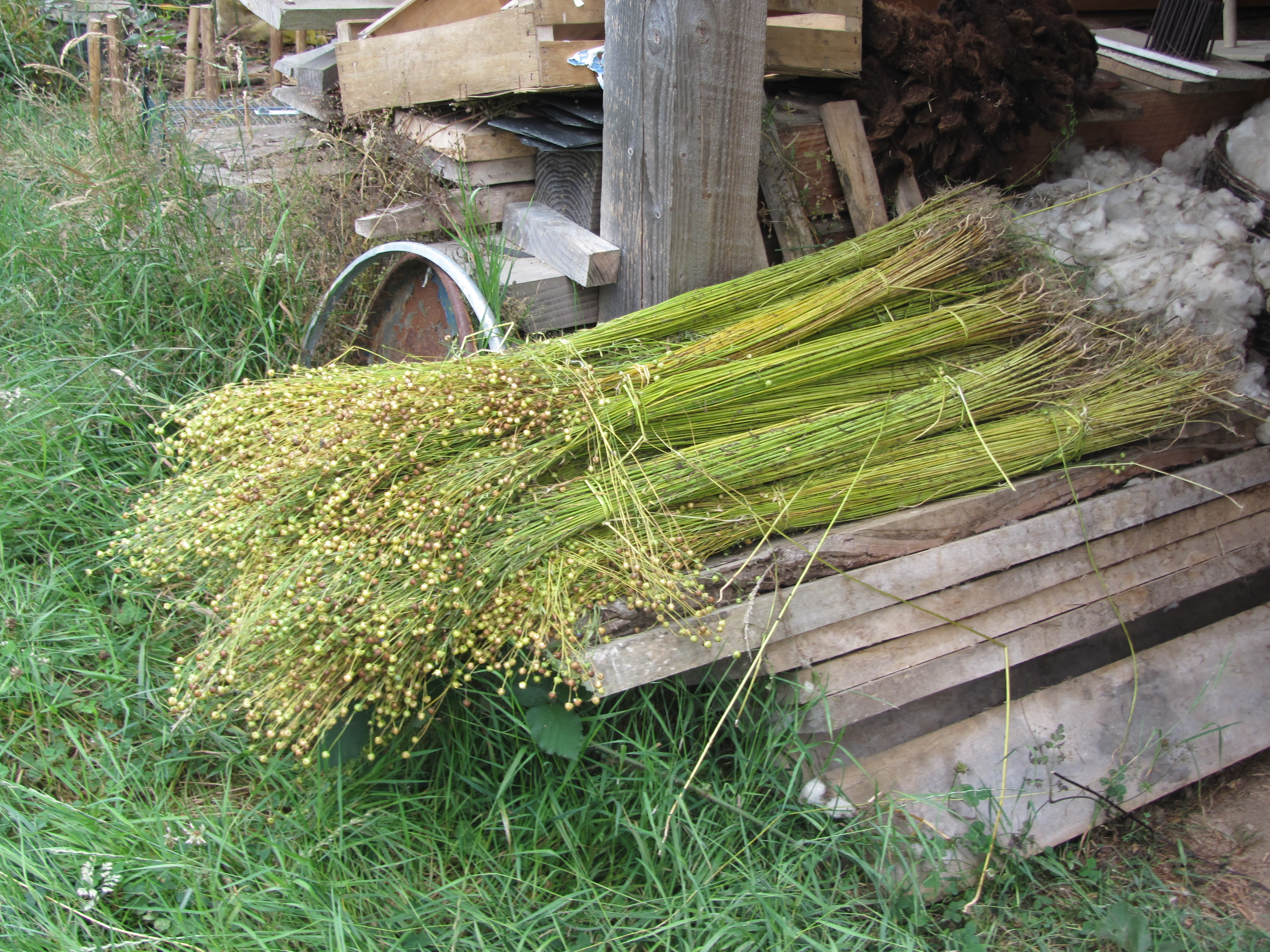
There are many different opinions of when it’s best to harvest the linen. I would say that there’s room for error, so don’t get too stressed. Even if you mess it up, the fibre you get will be millions times better than anything you could buy in the shops.
Basically, you should harvest the plants before the seeds are fully ripe. The stems will have started to turn yellow at the bottom, and the seed heads will also have turned from green to yellow. If you harvest the plants now, the seed heads will dry out, and the seeds will ripen on the plants, and can be collected, and sown next year. If you harvest the plants earlier (as some people recommend), the seeds will stay unripe, and cannot be used.
Harvesting the Linen
Pull up the plants by hand – yes, you really do pull up the whole plant, including the roots. This means you get the maximum amount of stem, and linen fibre. When you have a good bundle of plants, tie them top and bottom with string, or a linen plant (there’s not much difference, if you think about it). Lean the linen bundles together on the patch to dry in the sun, or stand them up against a wall, a woodpile, or a fence, and turn them from time to time, to make sure both sides get the sun. The colour of the plants will change from yellowy-green, to golden yellow, and the seed heads will turn dark brown.
When the plants are dry, put them under cover, in a shed, or some sort of barn.
Collecting the Seeds
If you harvested the plants a bit later on, the seeds will ripen. When the seed heads are completely dry, and the seeds inside are chestnutty to dark-brown, and nice and plump, then the seeds are ripe.
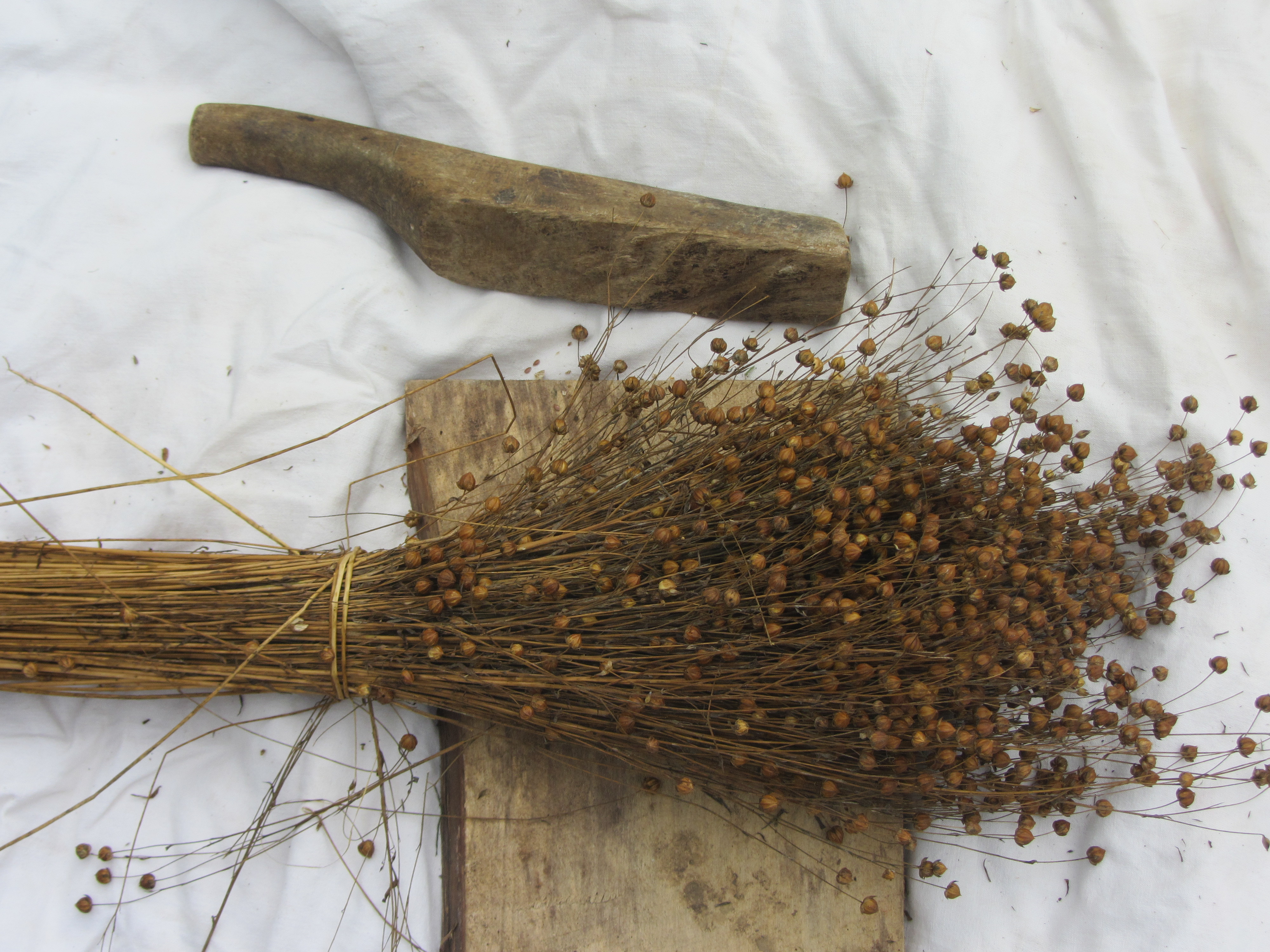
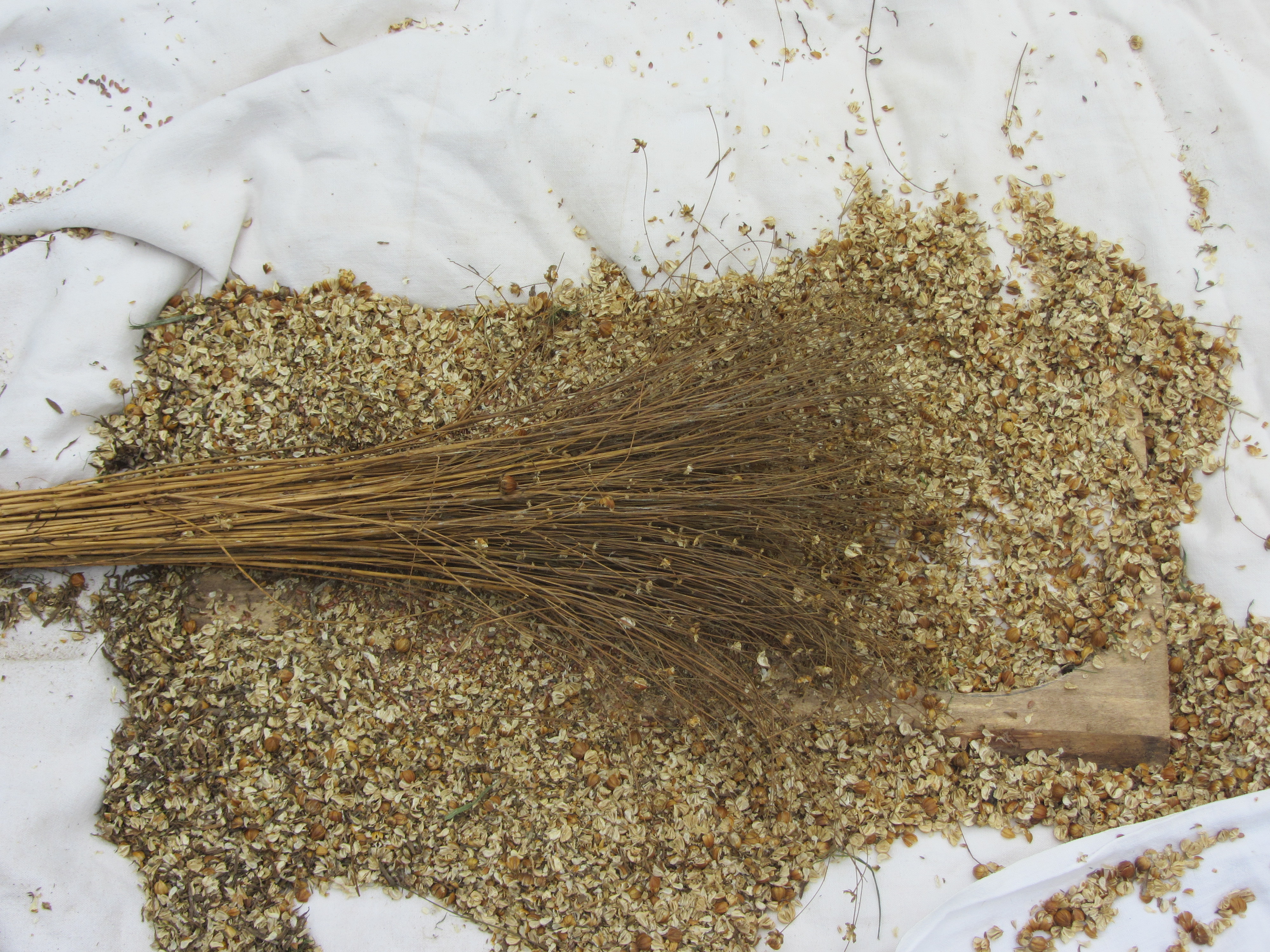

I harvest them by laying the linen bundle flat on a cloth on the ground, with the head resting on a plank of wood. I then bash the seed heads with a wooden mallet. The seed heads expolode, and the seeds pop out, and when I have a good amount, I gather them up in the cloth, and tip them into a bowl. At first the seeds will be mixed with all sorts of debris, so I winnow them by standing outdoors and gently tipping the seeds out of the bowl onto the cloth. The wind carries away the husks, and the seeds fall down into a nice little pile. Carry on winnowing until the seeds are clean, then put them on a tray indoors to dry completely. When they are dry, store them in a bag, or jar, to sow next year., If you have enough, you can also eat them, as they are very delicious.
Note:If your seeds have not ripened, bash them off anyway, as it will be easier to manage the bundles of linen, once you get rid of the seed heads.
Retting the Linen
Retting is a special word which describes the process of partially rotting the linen plants, using a pond, a stream, or dew. You do this, to separate the fibre from the rest of the stem. The tricky part is knowing when to stop the retting process – if you wait too long, the linen plants will rot away to nothing, if you don’t wait long enough, the fibre will still be attached to the woody stem, and you won’t be able to separate them.
I have had a lot of problems with retting, but it is getting a little bit better now. At first I tried to rett the linen plants using dew. I laid them out in long grass, and turned them regularly, but it was slow work, and I never managed to separate the stem from the fibre properly.
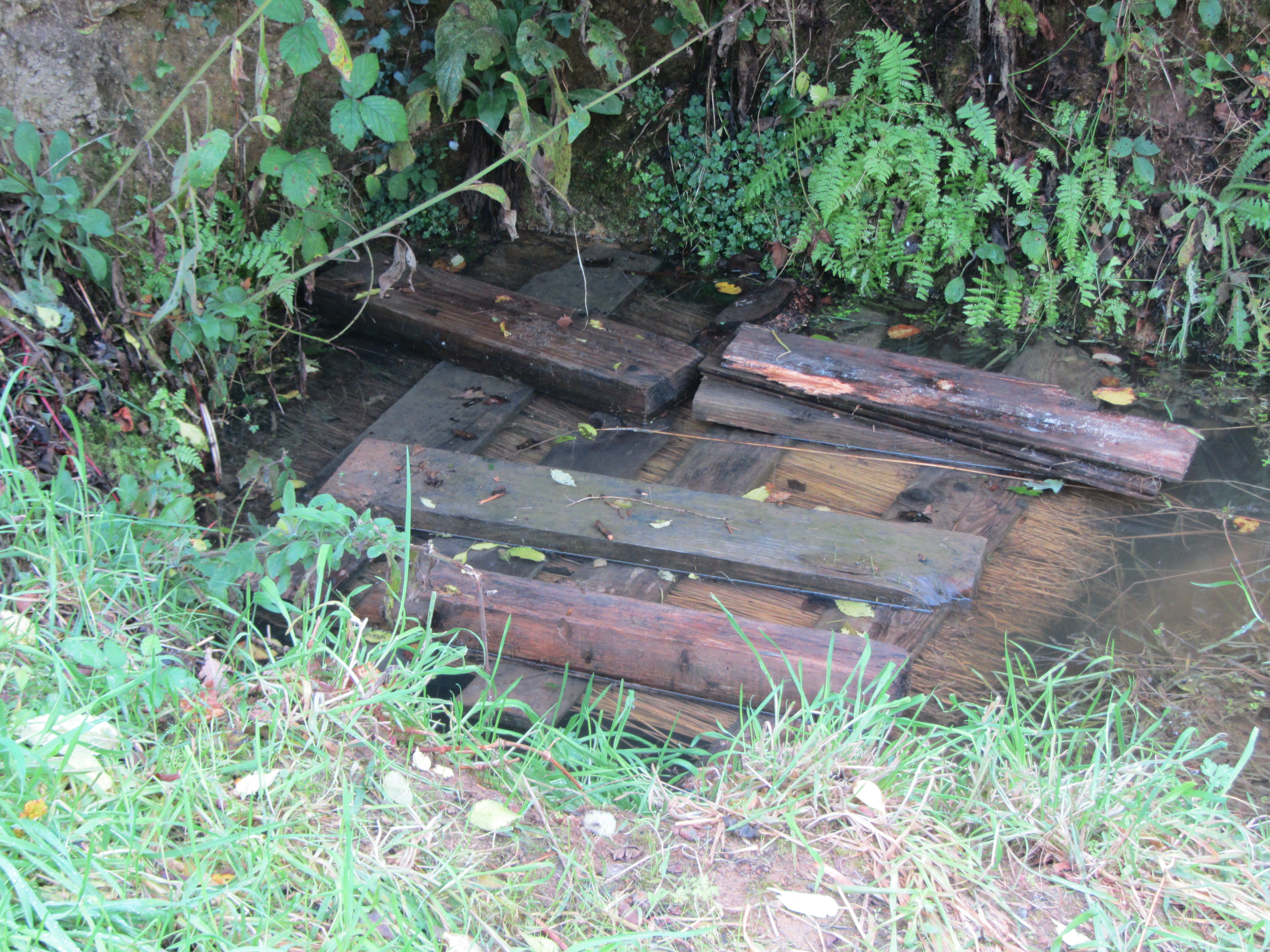
Pond Retting
Two years ago, I started using a pond to rett the linen. I know that not everyone has a pond, and I believe you can also use plastic tubs (but not metal tubs, apparently). However, I can only write about what I know. Our pond is dug in a very wet, boggy area of a water meadow, and is quite shallow, and quite small. All the linen bundles are carried down there, and then the bundles are untied (this is important, as retting the whole bundles doesn’t seem to work), and the plants carefully laid out flat in the water. They should be completely submerged, so at the end, we put some planks of wood on top of them, to push them beneath the surface.
I leave them in the pond for about ten days – by that time they start to smell quite strong, and the water goes pretty slimy. Lift the plants out as carefully as possible, and take them to somewhere flat, like a field, or a gardern lawn. Lay all the plants out on the grass – the more thinly they are spread out the better. At this point, the fibre will be hanging off the soggy stems, and will break very easily – but as the plants dry, the fibre will toughen up.
Extra Retting
I have found that the linen plants need a little extra retting, before they are ready. If you laid them out in an area with long grass, then you can simply leave them there for two-three weeks, turning regularly. Otherwise, you can dry them out in the short grass, then move them all to some long grass, which will gather more dew, and thus speed up the process.
Next Page: Preparing the Linen Fibre